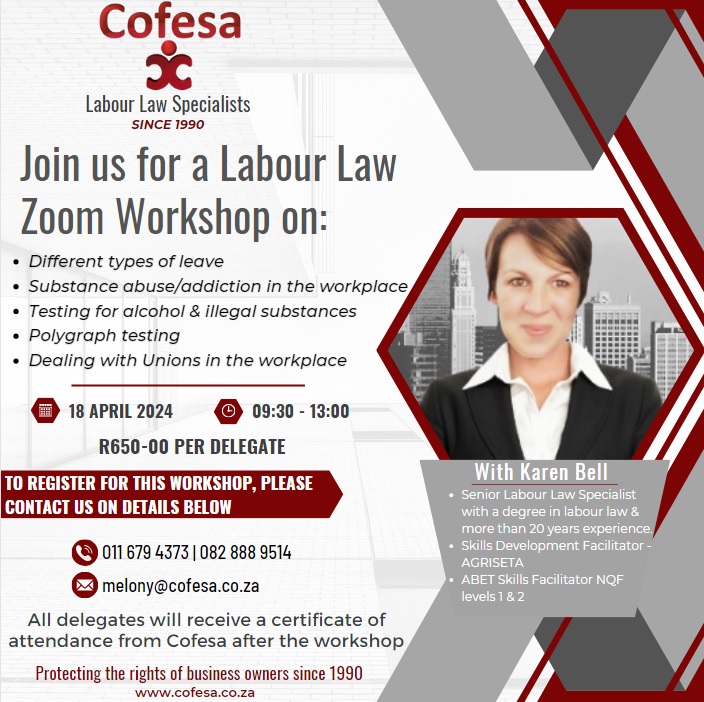It is established in South African law that an employer is vicariously liable for the acts or omissions of its employees committed during the course and scope of their employment. A classic example of this is where a contractor’s employee accidentally punctures a water pipe whilst working on a construction site, in which case the contractor would be vicariously liable to the claimant for any loss or damages suffered. The principle of vicarious liability and the tests established to determine whether liability rests with the employer are still very much based on common law principles and have not, until recently, seen much development, despite the many diverse cases heard by the courts over the years.
Some earlier case law suggested that the test to be used was the ‘risk of harm’ criterion, when determining whether a sufficiently close link exists between the harm caused by the employee and the business of the employer. However, according to the Minister of Law and Order v Ngobo (1992) decision, this test has never been regarded in our law as a consideration when determining whether vicarious liability exists.
The Supreme Court of Appeal, in the recent case of Stallion Security (Pty) Ltd v Van Staden (2019), stated that the law should be further developed to recognise that the creation of risk of harm by an employer may, in appropriate circumstances, constitute a relevant consideration in determining whether there is a sufficiently close link between the harm caused by the employee and the business of the employer, even if the harm caused is unrelated to the employer’s desires or employee’s mandate. The High Court, in the unreported case of Fujitsu vs Schenker (2020), adopted this legal principle and applied it to the facts before it. In both cases, the employer was found to be vicariously liable for the acts of its employee, despite the employee deviating from the direct mandate of his employer.
When applying this legal principle to your day-to-day business operations, it is important for all business owners to ensure that employees are entrusted with only as much power as is strictly necessary to ensure that the business operations run smoothly. In order to reduce any risk of an abuse of power and subsequent vicarious liability for the employer, absolute power should not be conferred on employees. Regular checks and balances must be implemented and enforced by the employer to ensure that all employees are performing work within the confines of their mandate. These measures may reduce opportunities that employees may have to use their position and power in furtherance of their own interests, to the detriment of the employer and third parties’ interests.
Before an employee is given additional power, it is in your best interests as a business owner, to consider:
- the extent of power conferred on the employee;
- any likely opportunities the employee will have to abuse this power;
- the extent to which an abuse of power will be closely related to, and inherently and intimately connected to, your business; and
- the nature of your business, and whether there is a risk that any of your clients will be exposed to potential wrongful acts by the employee.
In the Stallion case, Bidvest hired Stallion to provide security services in and around its premises. Stallion gave one of its employees a position of power by authorising the employee to enter and exit Bidvest’s premises without detection, providing the employee with the override key to the office area and instructing the employee to make unannounced visits to the premises. This unfettered access allowed the employee to gain an intimate knowledge of the layout of, and the security services at, the premises. When the Stallion employee recognised that a certain Bidvest employee generally worked after business hours, the employee saw this as an opportunity to use and abuse his power for his own personal gain. The employee entered the premises and robbed, and killed, the Bidvest employee, and further stole from Bidvest. This act was committed by the Stallion employee when on sick leave, after business hours and with a firearm unconnected to Stallion’s business. However, by appointing this employee to a position of (unchecked) power, Stallion created a risk of harm.
In the Fujitsu case, Schenker provided an employee with the necessary documents required to uplift and deliver a consignment belonging to Schenker’s client, Fujitsu. Instead of delivering the consignment to Fujitsu, the employee deviated from his mandate, and fled with the consignment, committing unlawful conduct in the form of theft. Since the employee, as a result of the authority given to him by Schenker, enjoyed unfettered access to the SAA security cargo area to uplift and remove the cargo for Fujitsu, a risk of harm was created or enhanced, and a sufficiently close link was established between the authority granted to the employee and the unlawful act, in order to render Schenker vicariously liable for the theft.
Schenker subsequently attempted to rely on the limitation of liability clause in its contract with Fujitsu to escape liability for the wrongful conduct of its employee (which excluded Schenker’s liability for any loss or damages suffered by Fujitsu, inter alia, arising out of the execution or attempted execution of Schenker’s obligations to Fujitsu), but the court interpreted the limitation of liability clause to apply only to losses or damages suffered by Fujitsu pursuant to or during the provision of the services by Schenker. In the circumstances, and applying the principles set out above, Schenker could not escape liability for the theft by its employee because the limitation of liability clause only limited Schenker’s liability for claims and damages arising from the performance or attempted performance of the services, and did not explicitly limit or exclude Schenker’s liability to Fujitsu for delictual claims (which includes claims related to theft). Although delicts are generally committed outside the course and scope of employment, the court found that Schenker had created a risk of harm, which enabled the employee to commit the theft, and as such held Schenker liable to Fujitsu for the employee’s wrongful conduct.
Needless to say, if the court approached these cases strictly in terms of the traditional legal principles on vicarious liability, Stallion and Fujitsu may not have been found to be liable for the employee’s acts, given that the acts were committed outside the course and scope of employment.
The above is a clear indication that the legal principles for vicarious liability have been extended beyond the traditional principle of “in the course and scope of their employment”, to include other criteria when establishing liability, such as the creation by the employer of risk of harm. With this in mind, business owners must weigh up the risks associated with entrusting employees with more power, and the costs associated with establishing safeguards that will reduce the company’s exposure to vicarious liability. When entering into contracts with clients, business owners should ensure that the limitation of liability clause is broad enough to apply to any acts or omissions of its employees, whether in contract, delict, strict liability, or otherwise, irrespective of whether it was committed in, or outside, the course and scope of their employment and the fulfillment of the business owner’s obligations under the contract.
Source: www.golegal.co.za Provided By Eversheds Sutherland By Grant Williams & Tyron Fourie
Don’t delay, contact Cofesa TODAY: 011-679 4373 | melony@cofesa.co.za
www.cofesa.co.za
NATIONWIDE ASSISTANCE

